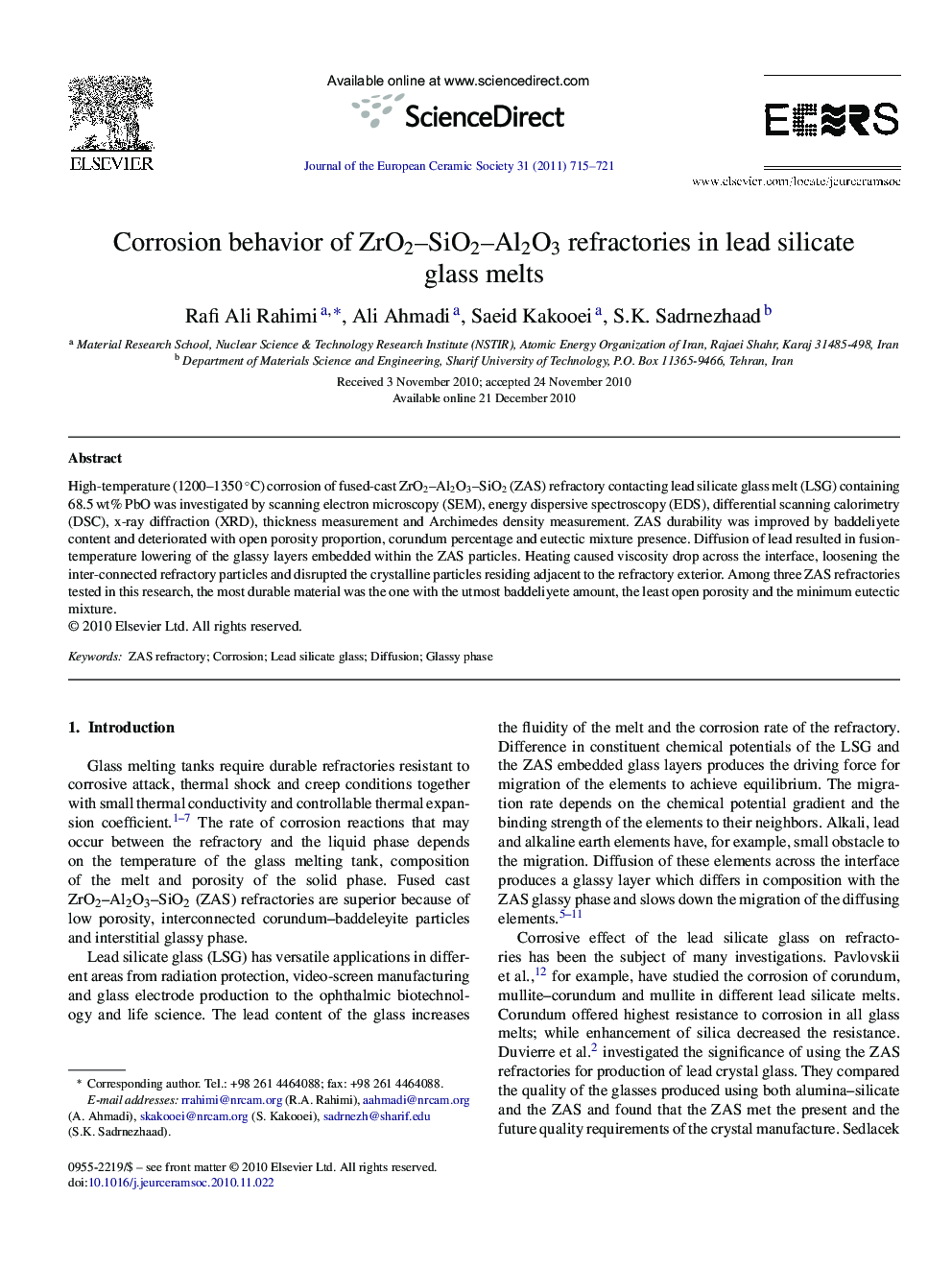| Article ID | Journal | Published Year | Pages | File Type |
|---|---|---|---|---|
| 10629762 | Journal of the European Ceramic Society | 2011 | 7 Pages |
Abstract
High-temperature (1200-1350 °C) corrosion of fused-cast ZrO2-Al2O3-SiO2 (ZAS) refractory contacting lead silicate glass melt (LSG) containing 68.5 wt% PbO was investigated by scanning electron microscopy (SEM), energy dispersive spectroscopy (EDS), differential scanning calorimetry (DSC), x-ray diffraction (XRD), thickness measurement and Archimedes density measurement. ZAS durability was improved by baddeliyete content and deteriorated with open porosity proportion, corundum percentage and eutectic mixture presence. Diffusion of lead resulted in fusion-temperature lowering of the glassy layers embedded within the ZAS particles. Heating caused viscosity drop across the interface, loosening the inter-connected refractory particles and disrupted the crystalline particles residing adjacent to the refractory exterior. Among three ZAS refractories tested in this research, the most durable material was the one with the utmost baddeliyete amount, the least open porosity and the minimum eutectic mixture.
Related Topics
Physical Sciences and Engineering
Materials Science
Ceramics and Composites
Authors
Rafi Ali Rahimi, Ali Ahmadi, Saeid Kakooei, S.K. Sadrnezhaad,
